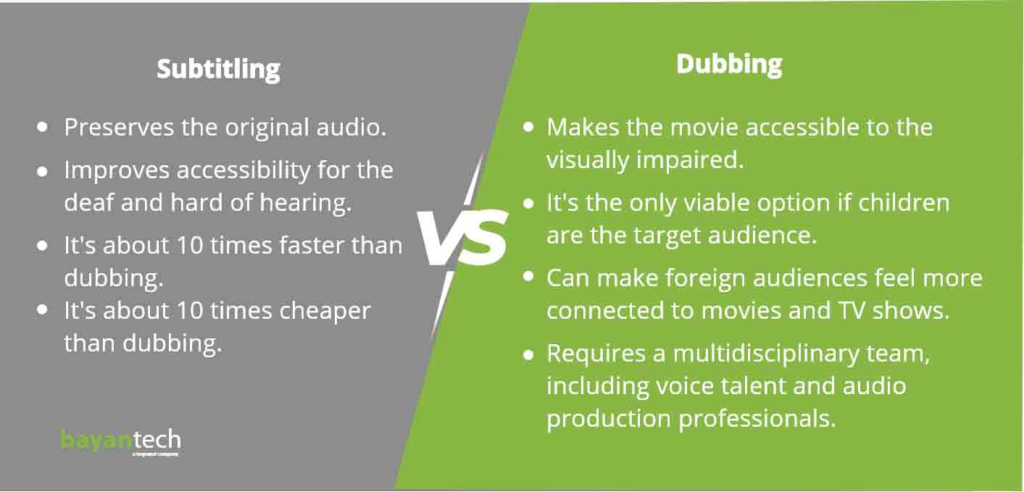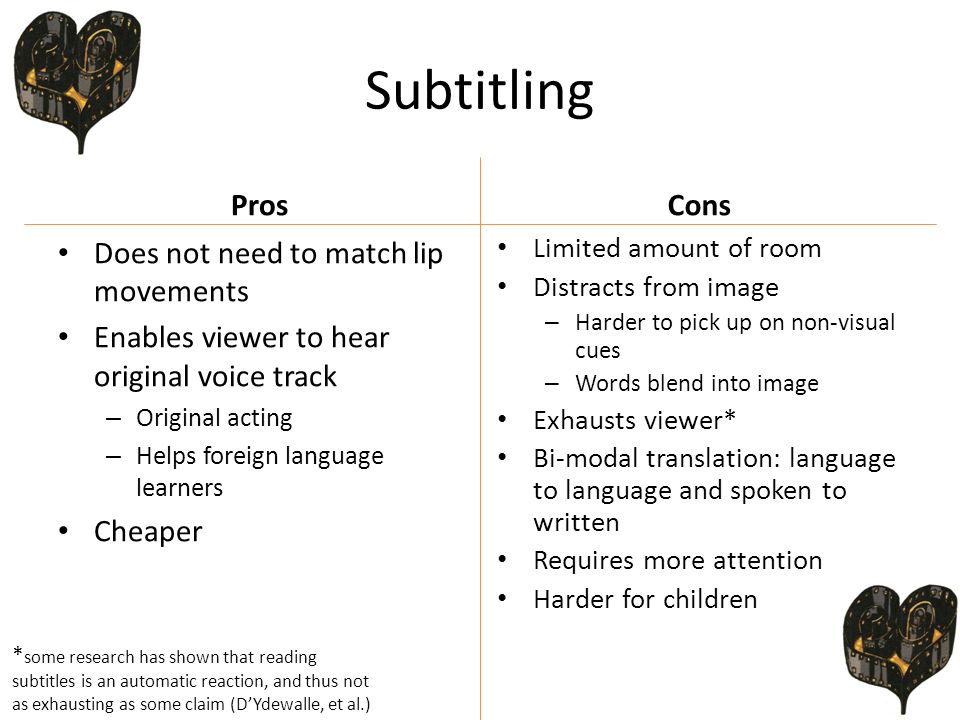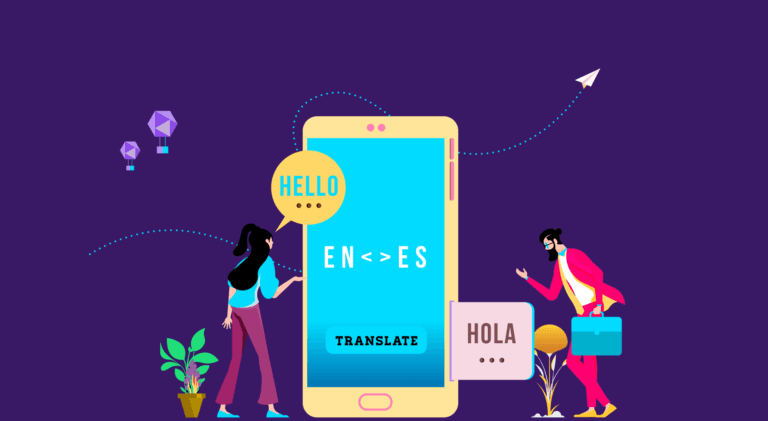Subtitling Vs Dubbing: The Differences and Features

The question of whether to subtitle or dub your product has long been debated in the entertainment industry. If you’re looking to release your product internationally, you’ll need to decide which method is best for your target market.
There are several factors to consider when making this decision, including the quality of the translation, the cost of dubbing or subtitling, and the preferences of your target audience.
To help you make the best decision for your product, we’ve put together a comprehensive guide to the pros and cons of subtitling vs dubbing. Keep reading to learn more!
The Difference Between Subtitling and Dubbing
With the rise of streaming services, more and more people are watching TV shows and movies worldwide. This has led to a growing demand for subtitled and dubbed content. But what’s the difference between these two types of content?
Subtitling is the process of adding text to a video to translate the dialogue into another language. Dubbing, on the other hand, is the process of replacing the original audio track of a video with a translated version.

Both subtitling and dubbing have their pros and cons. Subtitles are usually more accurate than dubbed audio, but they can be hard to read if they’re not well-written. Dubbed audio can be more natural-sounding than subtitles but can also be less accurate.
So which is better? It ultimately depends on your target audience. A large part of the audience does not want to read subtitles, so they prefer dubs. But a significant portion of the audience wants to see content in its original language. They would definitely appreciate the original dialogues and not mind the subtitles, as long as they are accurate.
Features of Dubbing
If you’re considering dubbing your film or video project, you should know a few things about the process. Dubbing can be a great way to improve the quality of your project, but it can also be expensive and time-consuming.
The biggest pro of dubbing is that it can help improve your project’s quality. If you’re dubbing an international film or video, dubbing can help to make the dialogue more understandable for English audiences. Also, dubbing can help improve your project’s overall audio quality. It can make the video more engaging for the target audience and allow them to relate more to the content.

However, there are also a few downsides to dubbing. One of the biggest is that it can be expensive. If you’re going for an English dub of a regional movie, you must get a completely new dubbing cast. Apart from that, you must also ensure they all know the source and target language for the most authentic translation. You must also rewrite the script to fill the cultural gap between the two languages. As such, dubbing a project can cost up to 10 times more than subtitling.
Features of Subtitling
There are many different ways to watch movies and TV shows these days. You can go to the theater, stream them online, or even watch them on your phone. But no matter how you watch them, one element is always present: subtitles.
Subtitles are a great way to help people understand what’s going on in a movie or TV show, especially if it’s in a language they don’t understand. Many prefer subtitling over dubbing because it gives them the original dialogues and emotions in the movie.

But there are also some drawbacks to subtitles. They can be distracting and sometimes give away important plot points. If the target audience does not know the spoken language, subtitles become the only source of interpretation. For many, they can also feel alienating.
A well-subtitled show can also take time to translate properly and needs a great team that knows both the source and target languages. The producer should be careful that the subtitles are correctly placed and do not obstruct the show. Ensuring these points is much cheaper than dubbing while maintaining the viewing experience.
Subtitling vs. Dubbing: Which Works Best For Your Product?
Both dubbing and subtitling can work wonderfully for translated projects. They help in the objective of localizing the content. They both allow you to reach a wider audience and engage with them. But a few simple factors can help you determine which is right for you.
Dubbing is the process of recording new dialogue in another language and matching it up with the original video. This can be a great way to ensure that the meaning of the dialogue is conveyed accurately. However, it can be expensive and time-consuming to dub a video. If you have the budget for dubbing, it can have excellent results.

Subtitling, on the other hand, is the process of adding text to a video in another language. This is generally a quicker and more affordable option than dubbing. However, it can be difficult to ensure that the text accurately conveys the meaning of the dialogue. Go for subtitling if you need don’t have the time and money for dubbing.
It depends on your time and budget regarding subtitling vs. dubbing. However, one crucial thing to consider is the translation. No matter which process you choose, ensure that you are authentic to the source language.
At the same time, you must consider the cultural factors. Check that the translation is not offensive to the target audience. It should help build a strong community rather than bringing up differences.

Go for a good translation service for subtitling and dubbing. Take the time to find the correct translation, and you will be rewarded in both endeavors.
FAQs
Both dubbing and subtitling have their pros and cons. While subtitling is easier, dubbing can be more engaging for a target audience. Make the right choice depending on your time and budget.
Dubbing an original video project requires a lot of time and money investment. You must get voice actors who can read and speak fluently in both languages. They should also be able to communicate the emotions perfectly to the target audience.
Subtitling retains the video’s original audio but can change the entire narrative. They can disrupt the viewing experience and risk showing spoilers too soon. They can also be alienating to a new audience that is new to a culture.
You can choose dubbing or subtitling based on your time, money, and talent assets. Go for dubbing if you can collect a great set of voice actors on time and invest in producing a completely new script and audio. You can go for subtitling if you would instead invest in good translators.
Latest Blogs
Learn how to rank on AI search engines like ChatGPT, Perplexity, and Gemini by optimizing your content for authority, structure, and relevance. Stay ahead in AI-driven search with this strategic guide.
Explore the best healthcare SEO services for your medical practice. Improve online visibility and effectively reach more patients in need of your services.
Discover top social media agencies specializing in banking solutions, enhancing financial services and driving engagement.
Get your hands on the latest news!
Similar Posts

Translation
5 mins read
All You Need to Know About Language Translation and Terminology Management

Translation
5 mins read
6 Reasons to Translate Content into German

Translation
5 mins read